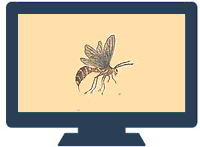Entomology, Department of
Date of this Version
2017
Document Type
Thesis
Citation
University of Nebraska-Lincoln Department of Entomology Online Masters Program Final Project. Lincoln, Nebraska
Abstract
Over the past ten years, the soybean aphid, Aphis glycines Matsumura (Hemiptera: Aphididae), has been one of the principal insect threats to commercial soybean, Glycine max (L.) Merr., production in the United States. Resistance genes identified from native soybean have been incorporated into commercial varieties to provide protection against aphid feeding damage. The biology of the pest lends itself to rapid buildup of biotypes capable of overcoming host plant resistance. Single gene resistance sources have displayed low levels of durability against aphids. The first aphid resistant commercial soybean line released in the United States contained the Rag1 gene, which was almost immediately overcome by Biotype 2 aphids. Aphid resistant varieties containing Rag1 have demonstrated increased yield compared to susceptible non-Rag1 soybean varieties when infested with Biotype 2 aphids, indicating some level of a tolerance response. Photosynthetic capacity in non-Rag1 soybeans has been observed to be significantly reduced by soybean aphid feeding. The photosynthetic impact of Biotype 2 aphids on Rag1 soybeans has not been previously characterized. This experiment explored and compared photosynthetic capacity in Rag1 and non-Rag1 soybeans as impacted by Biotype 2 soybean aphids to determine whether higher photosynthetic capacities could be responsible for the tolerance observed in Rag1 lines. While significant photosynthetic reductions were caused by Biotype 2 infestation, Rag1 did not appear to provide any protection to photosynthesis or seed count in this instance, thus it cannot be determined whether photosynthesis plays a role in tolerance previously observed. Further studies are necessary to address this question.


Comments
Copyright 2017 Katy Hillard